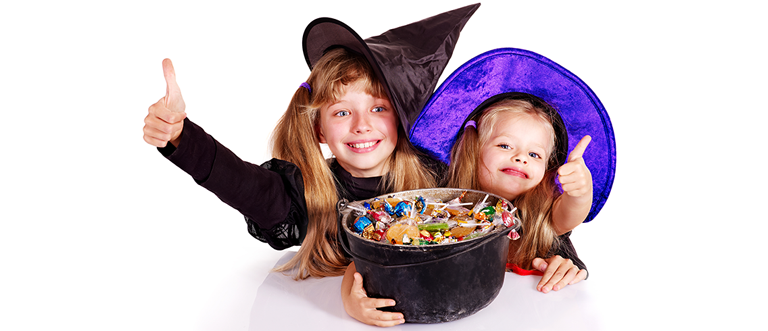Spooky Insights from KHTHeat
With Halloween this weekend, we thought we’d share some “tips and treats” we found online you can use to be the smartest goblin at the dinner table.
- Halloween originated in Ireland over 2,000 years ago and is typically believed to be the birthplace of Halloween. Some historians believe it originated around 4000 B.C., which means Halloween has been around for over 6,000 years.
- “Halloween” is short for “Hallows’ Eve” or “Hallows’ Evening.” In an effort to convert pagans, the Christian church decided that Hallowmas or All Saints’ Day (November 1) and All Souls’ Day (November 2) should assimilate sacred pagan holidays that fell on or around October 31.
- Halloween has been called All Hallows’ Eve, Witches Night, Lamswool, Snap-Apple Night, Nutcrack Night, Samhaim, and Summer’s End influenced by the ancient Roman festival Pomona, which celebrated the harvest goddess of the same name. Many Halloween customs and games that feature apples (such as bobbing for apples) and nuts date from this time.
- The first Jack O’Lanterns were actually made from turnips. The term jack-o’-lantern is in origin a term for the visual phenomenon ignis fatuus (lit., “foolish fire”) known as a will-o’-the-wisp in English folklore – uses “wisp” (a bundle of sticks or paper sometimes used as a torch) and the proper name “Will”: thus, “Will-of-the-torch.” The term jack-o’-lantern is of the same construction: “Jack of [the] lantern.”
- According to Irish legend, Jack O’Lanterns are named after a stingy man named Jack who, because he tricked the devil several times, was forbidden entrance into both heaven and hell. He was condemned to wander the Earth, waving his lantern to lead people away from their paths.
- The word “witch” comes from the Old English wicce, meaning “wise woman.” In fact, wiccan were highly respected people at one time. According to popular belief, witches held one of their two main meetings, or sabbats, on Halloween night.
- A persistent fear of Halloween is called Samhnainophobia
- The owl is a popular Halloween image. In Medieval Europe, owls were thought to be witches, and to hear an owl’s call meant someone was about to die.
- The largest pumpkin ever measured was grown in 2014 by Beni Meier weighing 2323.7 pounds recorded at the European Championship Pumpkin Weigh-off in Germany.
- The Guinness world record “pumpkin chuckin” shot is held by a pneumatic cannon dubbed “Big 10 Inch” at 5,545.43 feet (1,690.25 m). Team American Chunker, captained by Brian Labrie of New Hampshire, launched his pumpkin 4,694.68 feet (1,430.94 m) on November 1, 2013, in Bridgeville, Delaware, the longest shot in US event history.
- The fastest time to carve a pumpkin is 16.47 seconds achieved by Stephen Clarke (USA) on October 31, 2013. The jack-o’-lantern is required to have a complete face, including eyes, nose, mouth and ears.
- Trick-or-treating evolved from the ancient Celtic tradition of putting out treats and food to placate spirits who roamed the streets at Samhain, a sacred festival that marked the end of the Celtic calendar year.
- “Souling” is a medieval Christian precursor to modern-day trick-or-treating. On Hallowmas (November 1), the poor would go door-to-door offering prayers for the dead in exchange for soul cakes. The first known mention of trick-or-treating in print in North America occurred in 1927 in Blackie, Alberta, Canada.
- Black and orange are typically associated with Halloween. Orange is a symbol of strength and endurance and, along with brown and gold, stands for the harvest and autumn. Black is typically a symbol of death and darkness and acts as a reminder that Halloween once was a festival that marked the boundaries between life and death.
- Cats and fires have a permanent place in Halloween folklore. During the ancient festival, bonfires were lit to ensure the sun would return after the long, hard winter. Often Druids were said to throw cats into a fire, often in wicker cages, as part of divination proceedings and also throw the bones of cattle into the flames and, hence, “bone fire” became “bonfire.
- Scarecrows, a popular Halloween fixture, symbolize the ancient agricultural roots of the holiday.
- Scottish girls believed they could see images of their future husband if they hung wet sheets in front of the fire on Halloween. Other girls believed they would see their boyfriend’s faces if they looked into mirrors while walking downstairs at midnight on Halloween.
- According to tradition, if a person wears his or her clothes inside out and then walks backwards on Halloween, he or she will see a witch at midnight.
- Dressing up as ghouls and other spooks originated from the ancient Celtic tradition of townspeople disguising themselves as demons and spirits. The Celts believed that disguising themselves this way would allow them to escape the notice of the real spirits wandering the streets.
- The average American will spend over $75 on Halloween totaling over $6 billion dollars.




Leave a Reply
Want to join the discussion?Feel free to contribute!